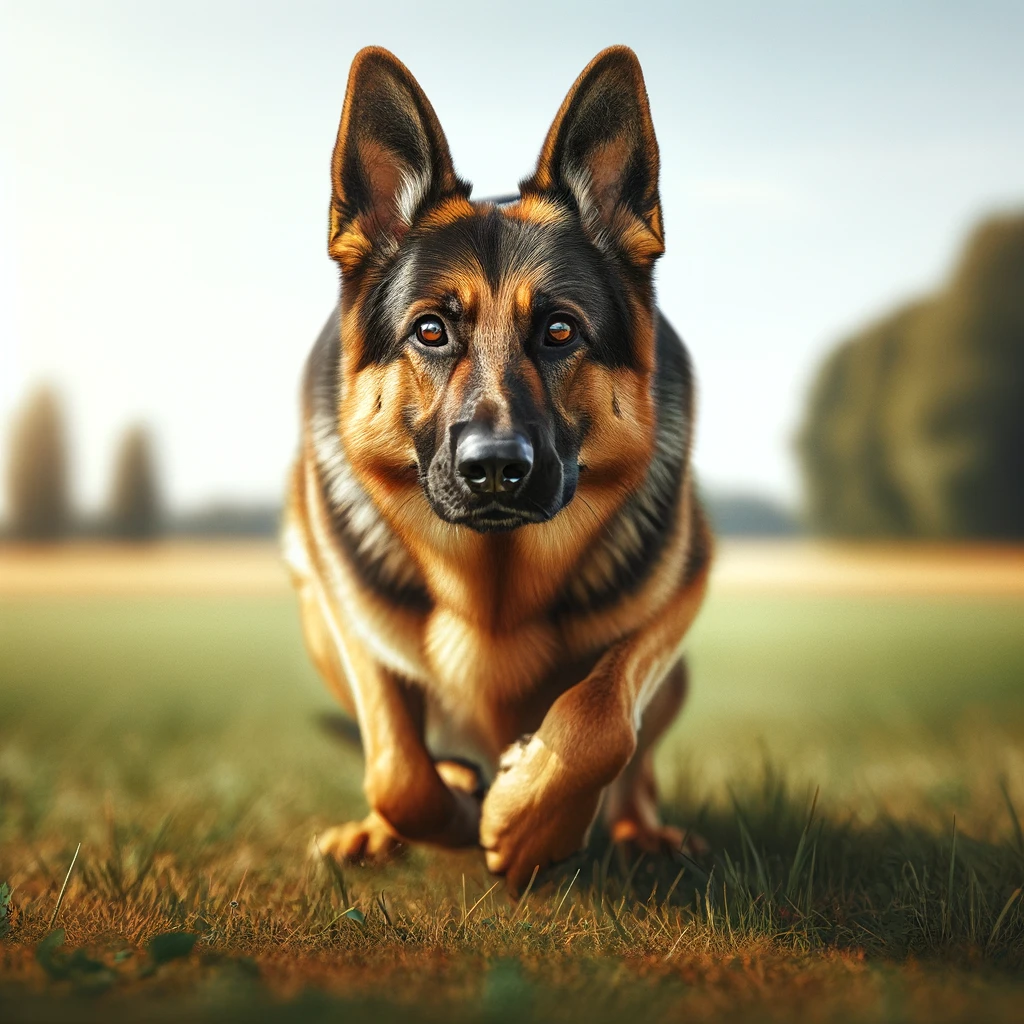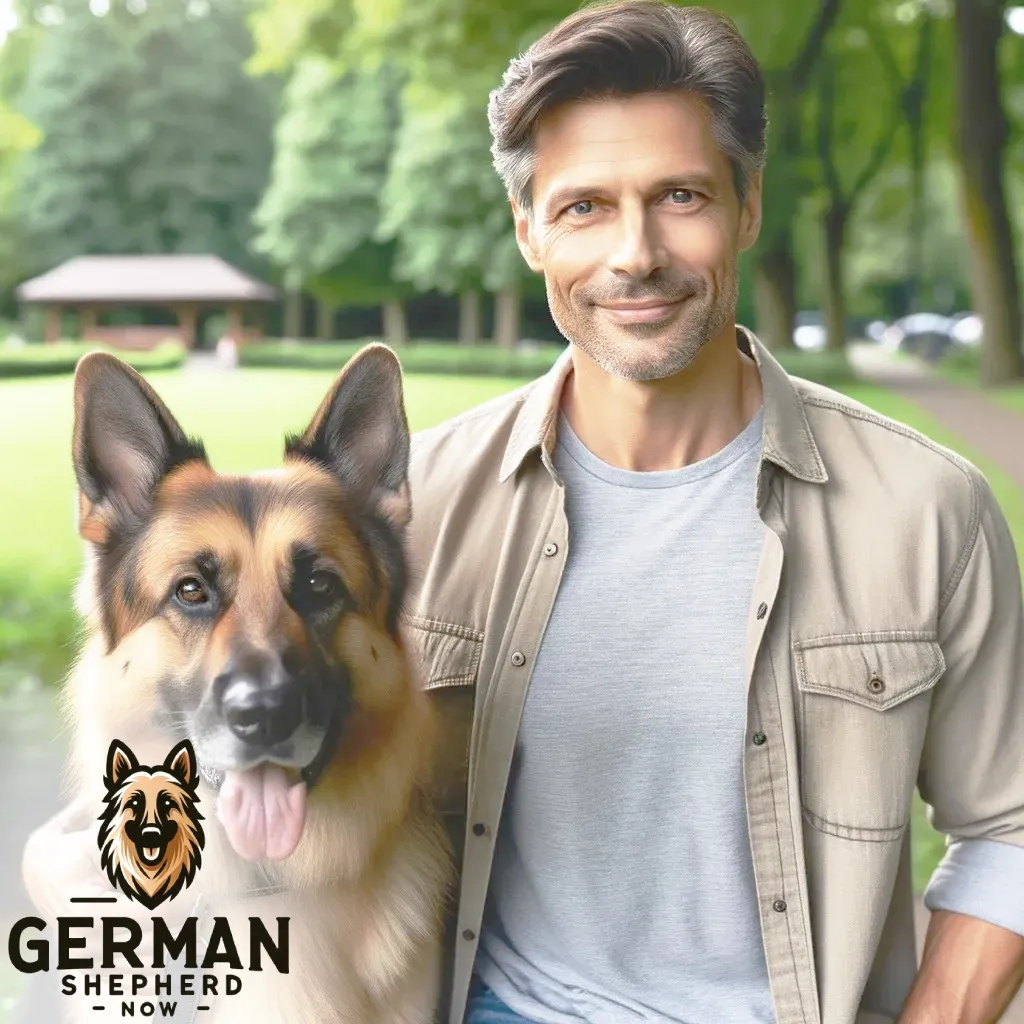Do German Shepherds Have High Prey Drive

Yes, German Shepherds have a high prey drive, an instinctive desire to stalk, capture, and prey upon potential food sources. This behavior is partly due to their wolf ancestry and has been reinforced through selective breeding.
A strong prey drive can be seen in various aspects of their daily life, such as herding livestock, protecting the herd from predators, and participating in canine sports like agility or police work.
Understanding “Prey Drive” in German Shepherds
“Prey drive” is used in the dog world, but what does it mean? This innate behavior, rooted in the instinct of dogs, plays a significant role in how they interact with their environment and other creatures.
Exploring Prey Drive
Prey drive is the automatic inclination of a dog to pursue and sometimes capture prey.
This behavior is not about hunting to kill; it encompasses several actions, such as stalking, chasing, and grabbing.
Different dog breeds exhibit varying levels of prey drive, influenced by their historical roles.
For instance, hunting, herding, and working dogs often have a more pronounced prey drive due to selective breeding for traits that enhance their ability to perform specific tasks.
Characteristics of Prey Drive
- Chasing Movements: Dogs with a high prey drive are often triggered by moving objects, whether a running animal, a flying ball, or a moving car.
- Stalking Behavior: This involves a dog watching potential prey, often followed by a sudden chase.
- Grabbing and Biting: Dogs might grab or bite Once they catch up to their target, simulating prey capture.
Handling the High Prey Drive of German Shepherds
German Shepherds, renowned for their intelligence and versatility, are often sought after for various roles such as police work, service tasks, and companionship.
Their high prey drive, an instinct inherited from their herding ancestry, can pose challenges.
Managing this trait ensures a harmonious coexistence with these energetic canines.
- Early Socialization and Training: Begin socializing your German Shepherd from a young age. Expose them to different people, animals, environments, and situations. Consistent training helps them understand acceptable behaviors and learn to control impulses.
- Regular Exercise and Mental Stimulation: These dogs require ample physical activity and mental engagement. Daily exercise like long walks, running, or playing fetch, coupled with mental challenges such as puzzle toys or obedience training, helps channel their energy.
- Leash Training: Effective leash training is crucial Since German Shepherds might chase after moving objects. Teach them to walk on a leash and respond to commands like ‘leave it’ or ‘stay,’ especially in outdoor environments.
- Focused Play and Training Sessions: Incorporate play that allows them to use their prey drive. Games like tug-of-war, when played with rules (like releasing on command), help control their instincts.
- Positive Reinforcement: Reward desired behaviors with treats, praise, or playtime. Positive reinforcement encourages good behavior and strengthens your bond with your dog.
- Professional Guidance: If you struggle to manage your German Shepherd’s prey drive, consider consulting a professional dog trainer or behaviorist. They can provide customized strategies and support.
Remember, the key to managing a German Shepherd’s prey drive is patience, consistency, and understanding their needs. These intelligent dogs can become well-behaved and loyal companions with proper guidance and training.
Difference Between German Shepherd and Other Dog Breeds in Prey Drive
Prey drive is an instinctual behavior in many dog breeds, compelling them to pursue and capture prey. While common across breeds, its intensity and manifestation can vary significantly.
This table outlines the differences in prey drive characteristics between German Shepherds and other popular dog breeds, providing insights into their behavioral tendencies and training needs.
| Dog Breed | Prey Drive Characteristics | Comparison with German Shepherd |
| German Shepherd | High, with a strong instinct to chase and capture. Often used in roles requiring alertness and responsiveness. | — |
| Labrador Retriever | Moderate to low, more inclined to retrieve than to chase. Known for their gentle mouth and retrieving skills. | Less intense than German Shepherds, making them easier for casual training and control. |
| Greyhound | Very high, bred for speed and hunting. Extremely fast and driven by movement. | More singularly focused on the chase compared to the versatile prey drive of German Shepherds. |
| Beagle | High, primarily scent-driven, strongly inclined to track and follow smells. | Less visually driven than German Shepherds, focusing more on scent tracking. |
| Border Collie | High, with a strong herding instinct. Tend to chase and herd animals or people. | Similar in intensity to German Shepherds but more focused on herding than hunting. |
| Siberian Husky | Moderate, with a tendency to chase small animals. Bred for endurance and pulling. | Less intense prey drive compared to German Shepherds, but can be similarly challenging to train due to independence. |
| Jack Russell Terrier | High, initially bred for fox hunting. Energetic and tenacious in chasing small animals. | Smaller in size but with a comparable level of intensity in prey drive to German Shepherds. |
Mastering the Chase: German Shepherds’ Prey Drive
The high prey drive of German Shepherds, a trait rooted in their herding and working dog heritage, presents unique challenges and opportunities for owners and trainers.
Understanding and managing this instinct is crucial for fostering a safe and harmonious relationship with these intelligent and versatile dogs.
German Shepherds can channel their prey drive. This knowledge, coupled with the comparison to other breeds, highlights the importance of tailored training strategies that respect the inherent traits of each breed.
Understanding and managing a German Shepherd’s prey drive ensures these loyal and capable dogs can thrive in various roles, from faithful companions to skilled working dogs.

I’m Martin, and I grew up in the super cool city of Seattle. You know, the place with all the incredible mountains and forests? Yeah, that’s my playground!
Ever since I was little, I’ve been all about nature. I used to wander around the woods with a notebook, doodling all the cool plants and animals I’d find.
